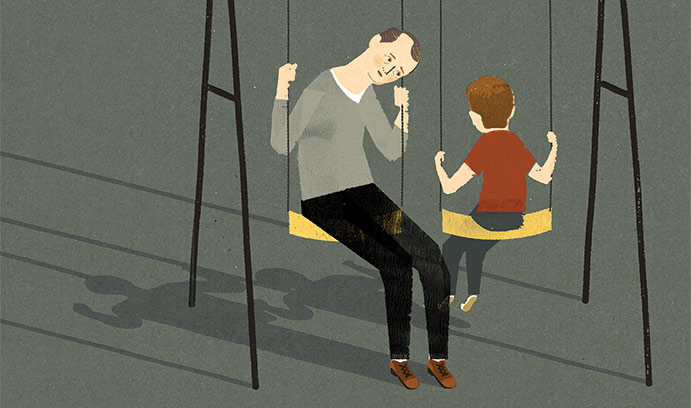Understanding ADHD

"...treatments, like stimulant medication, that primarily act to reduce ADHD symptoms must always be accompanied by other interventions that focus directly on improving academic and social impairments."
Greg is a 7-year-old first-grade student in a general education classroom in a public elementary school. Since preschool, he has had problems paying attention, acting quickly without thinking, and being very active and restless. These problems continued in kindergarten and first grade as teachers report him to have a short attention span, to struggle getting work done, to have difficulties staying seated during group activities, and to interrupt conversations frequently. Greg’s parents also notice these behaviors when he is asked to do chores as well as during mealtimes, getting ready for school, or preparing for bedtime. As a result of these behaviors, Greg is already well behind his peers in reading and math skills and has few friends his age. Understandably, Greg’s parents are very concerned about his school and social difficulties and have sought assistance from his pediatrician. Using information gathered from Greg’s parents and teacher, his pediatrician diagnoses Greg with Attention Deficit Hyperactivity Disorder (ADHD) and prescribes a stimulant medication to reduce his symptoms.
The educational and social challenges that Greg and his family face are typical for children with ADHD, a relatively common neurodevelopmental disorder affecting about 5 percent of youth in the United States and worldwide. Over the longterm, children like Greg are at higher than average risk for chronic underachievement, grade retention, school dropout, aggression toward classmates, and problems maintaining friendships and romantic relationships. My colleagues and I recently completed a national survey of teachers and found that about 7 percent of students in grades K-12 exhibit significant symptoms of ADHD (i.e., inattention and/or hyperactivity-impulsivity) combined with impairments in academic or social functioning. ADHD symptoms and associated impairments are enormously costly to schools and families in terms of resources, finances, and emotional stress.
As is the case for Greg, most clinical and research treatment efforts focus on reducing symptoms with only secondary attention directed toward improving educational and social functioning. In fact, the hundreds of scientific investigations evaluating the effects of Ritalin and other stimulant medications have with few exceptions primarily examined the degree to which medication reduces inattention, impulsive behavior, and hyperactivity. The good news is that these studies consistently show relatively large reductions in ADHD symptoms for the majority of youngsters receiving medication. Unfortunately, investigations also have shown that stimulant medication has modest effects, if any, on academic and social functioning. For example, the single largest ADHD treatment study ever conducted (the Multimodal Treatment of ADHD or MTA study) found stimulants to reduce ADHD symptoms by about one standard deviation (considered a large effect) over 14 months. In contrast, that same study found less than a quarter standard deviation improvement in achievement test scores and social skills ratings for medication treatment.
In contrast, I believe that treatment for ADHD must primarily focus on critical areas of functioning rather than symptoms for several reasons. First, as was the case for Greg, parents and teachers are most concerned about children’s ability to succeed academically and get along with classmates. It is those concerns, and not the symptoms per se, that typically prompt parents to seek treatment for children with ADHD in the first place. Second, parents and teachers don’t consider treatment to be a success unless children make educational and social progress. It isn’t sufficient that children’s attention improves and/or they become less impulsive and hyperactive. They also have to show concomitant growth in reading, math, and interpersonal skills for consumers (i.e., parents and teachers) to be satisfied with an intervention program. Third, in order for children with ADHD to be on par with their classmates, the former must not only behave similarly to their peers but also must be on grade level academically and socially. Children are aware of how they measure up relative to their peers, and so for treatment to be successful in their eyes, they must see themselves as “normal.”
The implicit assumption that many clinicians and researchers make is that reductions in ADHD symptoms will automatically lead to improvements in academic and social functioning. That is, if we can just get children to pay attention better, sit still, and wait their turn, then they will eventually show improvement in reading, math, other academic areas, and interpersonal skills. Unfortunately, as was demonstrated in the MTA project and other studies, this assumption is typically not supported. This means that treatments, like stimulant medication, that primarily act to reduce ADHD symptoms must always be accompanied by other interventions that focus directly on improving academic and social impairments. The latter strategies include interventions that involve (a) teachers and parents changing classroom and home environments to prompt and reward desired levels of educational and social performance, (b) children receiving direct instruction and guided practice in academic skills, and (c) children monitoring and evaluating their own performance in class and/or with peers.
The advantage of using intervention strategies directly targeting areas of academic and social impairment is that studies have shown these treatments to not only improve functioning but also to reduce ADHD symptoms. That is, when children make progress in reading and math and getting along with classmates, they also tend to look more attentive and less hyperactive-impulsive. It would certainly be difficult for students to get their work done accurately and interact appropriately with their classmates without also paying attention and controlling their behavior. Given that treatment directly targeting academic and social functioning can essentially “kill two birds with one stone” by simultaneously impacting impairment and symptoms, it is critically important for clinicians (like Greg’s pediatrician) to prioritize educational and social performance interventions over the more typical symptom reduction approach of medication. Ultimately, for children and adolescents with ADHD to succeed in school and life, they will need sustained treatment not just for symptoms but supportive strategies that directly focus on improving their functioning.
George DuPaul, professor of School Psychology
Posted on:


